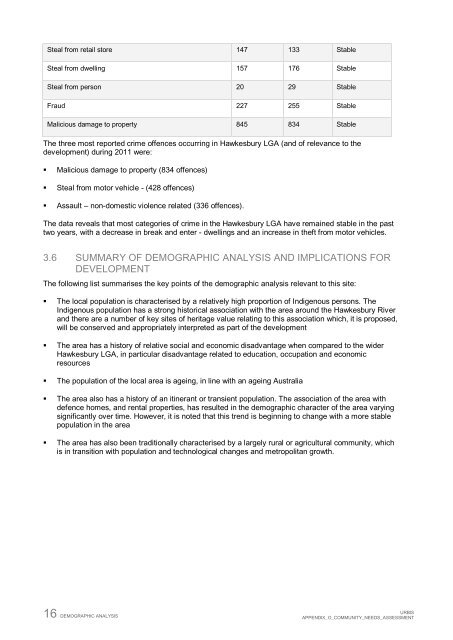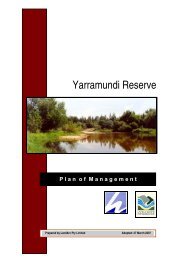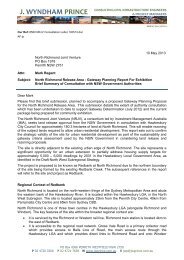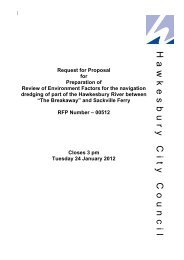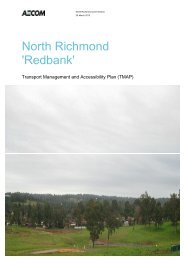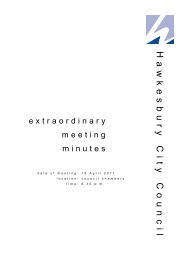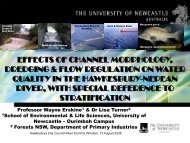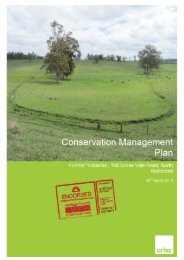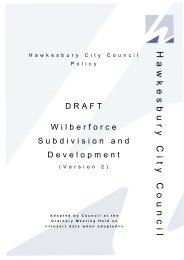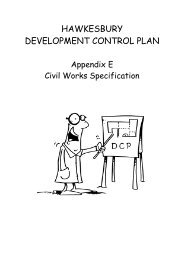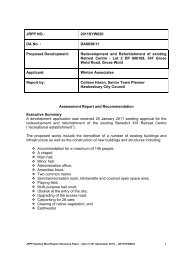Community Needs Assessment - Hawkesbury City Council
Community Needs Assessment - Hawkesbury City Council
Community Needs Assessment - Hawkesbury City Council
Create successful ePaper yourself
Turn your PDF publications into a flip-book with our unique Google optimized e-Paper software.
Steal from retail store 147 133 Stable<br />
Steal from dwelling 157 176 Stable<br />
Steal from person 20 29 Stable<br />
Fraud 227 255 Stable<br />
Malicious damage to property 845 834 Stable<br />
The three most reported crime offences occurring in <strong>Hawkesbury</strong> LGA (and of relevance to the<br />
development) during 2011 were:<br />
• Malicious damage to property (834 offences)<br />
• Steal from motor vehicle - (428 offences)<br />
• Assault – non-domestic violence related (336 offences).<br />
The data reveals that most categories of crime in the <strong>Hawkesbury</strong> LGA have remained stable in the past<br />
two years, with a decrease in break and enter - dwellings and an increase in theft from motor vehicles.<br />
3.6 SUMMARY OF DEMOGRAPHIC ANALYSIS AND IMPLICATIONS FOR<br />
DEVELOPMENT<br />
The following list summarises the key points of the demographic analysis relevant to this site:<br />
• The local population is characterised by a relatively high proportion of Indigenous persons. The<br />
Indigenous population has a strong historical association with the area around the <strong>Hawkesbury</strong> River<br />
and there are a number of key sites of heritage value relating to this association which, it is proposed,<br />
will be conserved and appropriately interpreted as part of the development<br />
• The area has a history of relative social and economic disadvantage when compared to the wider<br />
<strong>Hawkesbury</strong> LGA, in particular disadvantage related to education, occupation and economic<br />
resources<br />
• The population of the local area is ageing, in line with an ageing Australia<br />
• The area also has a history of an itinerant or transient population. The association of the area with<br />
defence homes, and rental properties, has resulted in the demographic character of the area varying<br />
significantly over time. However, it is noted that this trend is beginning to change with a more stable<br />
population in the area<br />
• The area has also been traditionally characterised by a largely rural or agricultural community, which<br />
is in transition with population and technological changes and metropolitan growth.<br />
16 DEMOGRAPHIC ANALYSIS<br />
URBIS<br />
APPENDIX_O_COMMUNITY_NEEDS_ASSESSMENT


